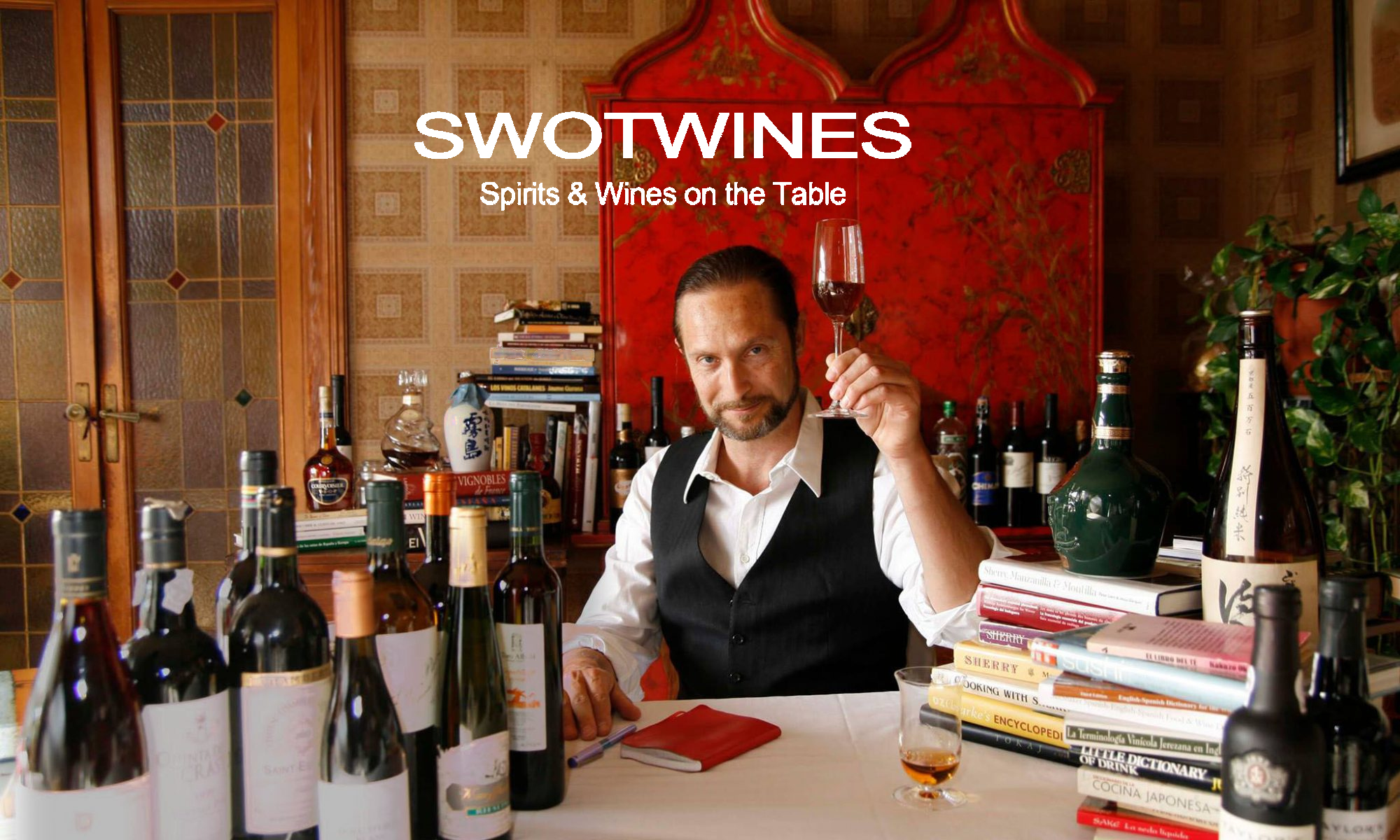I spent three days with my colleagues  of El Petit Celler at Champagne last week. It was a destination that I always wanted to visit, and finally I managed to! Champagne provides us snapshots of bubbles, celebrations, glamour, happiness, luxury… Why? There are a lot of reasons for that, but one of the reasons is the soil.
of El Petit Celler at Champagne last week. It was a destination that I always wanted to visit, and finally I managed to! Champagne provides us snapshots of bubbles, celebrations, glamour, happiness, luxury… Why? There are a lot of reasons for that, but one of the reasons is the soil.
You may know that there is a big similarity among the best soils in Champagne, Jerez and Montilla-Moriles. They share a high percentage of calcium compounds on them. Champagne has a chalky loam soil plenty of Coccolithes (microfosils) and Belemnites (shelled cephalopodes), whereas Montilla-Moriles and Jerez have soils which are very rich in «younger» calcium carbonate loams, but without reaching the age of the Champagne soils. This chemical composition and geological structure forces vines to get the best of them in terms of survivance, because these soils are poor, and therefore, they enforce the vine to strive for nutrients and water. This, in turn, allows the production of some of the best wines in the world, in terms of quality. The longevity, finesse and personality of these wines are absolutely outstanding.
I arrived in Epernay keeping these issues in mind, but without an idea of how interesting the trip would be. We visited ten wineries within those three days. Hard work, I must admit! A lot of sipping, spitting and rushing, but I managed to figure out what is going on in those small wineries. Let us start to decipher them.

The first visit was at Champagne Baron-Fuenté at Charly-Sur-Marne. The area is well known for the production of Pinot Meunier. They are the «biggest» winery among the ones we visited, with an overall production of 1.3 million bottles. I tasted nine wines. All of them were very nice. What I liked the most was Baron-Fuenté Millésimé 2006 and Baron-Fuenté Pinot Meunier, with an excellent foam, well balanced aroma and long lasting aftertaste.
Our second visit was a very surprising one. 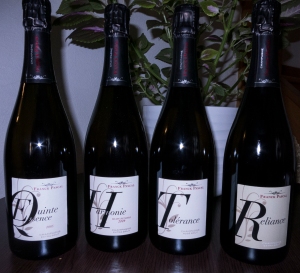 Sited 18 km east from Epernay, Franck Pascal is a boutique winery. They own less than 4 ha and have a production of less than 30 000 bottles per year. Despite Franck Pascal started three generations ago, it is its actual owner, named Franck, who in 1994 decided to produce wines based on the «terroir» concept. He had a look into Alsace and other areas where the organic farming was used and he decided to move one step forwards. He shifted to organic farming in 2000 and to biodynamic farming in 2002 (getting the Biodyvin seal), with the aim of getting the best of its soils and to avoid the use of any synthetic product or pesticide. He says: “the soil is the life”. He uses every device at his reach to measure the “health” of his soils and the stress of the yeast, with the aim to ease the life of the yeast to produce the calmest and most balanced alcoholic fermentation possible. He balances this stress if he feels that something is not going on well by means of different devices (pendulum included). It seems a bizarre and non scientific approach, but his wines are excellent. To me, the best ones are Franck Pascal Quintessence 2005 and Franck Pascal Sérenité. Both of them are terrific.
Sited 18 km east from Epernay, Franck Pascal is a boutique winery. They own less than 4 ha and have a production of less than 30 000 bottles per year. Despite Franck Pascal started three generations ago, it is its actual owner, named Franck, who in 1994 decided to produce wines based on the «terroir» concept. He had a look into Alsace and other areas where the organic farming was used and he decided to move one step forwards. He shifted to organic farming in 2000 and to biodynamic farming in 2002 (getting the Biodyvin seal), with the aim of getting the best of its soils and to avoid the use of any synthetic product or pesticide. He says: “the soil is the life”. He uses every device at his reach to measure the “health” of his soils and the stress of the yeast, with the aim to ease the life of the yeast to produce the calmest and most balanced alcoholic fermentation possible. He balances this stress if he feels that something is not going on well by means of different devices (pendulum included). It seems a bizarre and non scientific approach, but his wines are excellent. To me, the best ones are Franck Pascal Quintessence 2005 and Franck Pascal Sérenité. Both of them are terrific.
Third visit: R. H. Coutier, a Grand Cru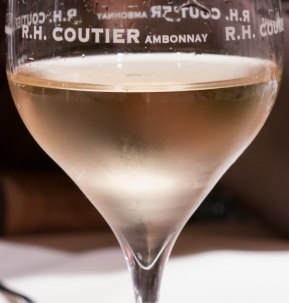 sited at Ambonnay. The company dates back to 1880, when they bottled for the first time. Renné took over the company in 1969, and his son in 2014. They use neither malolactic fermentation nor synthesis products. They produce just 50 000 bottles per year, plus 600 under the appellation Cotê Champenoise. Coutier Reserve 2014 (100% Pinot Noir) and Coutier Blanc de Blancs 2008 were my favourite ones.
sited at Ambonnay. The company dates back to 1880, when they bottled for the first time. Renné took over the company in 1969, and his son in 2014. They use neither malolactic fermentation nor synthesis products. They produce just 50 000 bottles per year, plus 600 under the appellation Cotê Champenoise. Coutier Reserve 2014 (100% Pinot Noir) and Coutier Blanc de Blancs 2008 were my favourite ones.

Next day, we started with Vilmart. Their calcareous clay soil gives a nice touch to their wines, which are classified as Premier Cru. Grand Celler d’Or 2011, 2010 and 2005 are really as outstanding as Core de Cuvée 2002 is. They share a gastronomic profile: smooth foam, vibrant mouth with a slightly bitterness at the aftertaste.
Next destination: De Sousa in Avize, a population infamous for having one of the best chalky soils of the whole Champagne, which is very rich in Belemnites. De Sousa dates back to the 1950’s.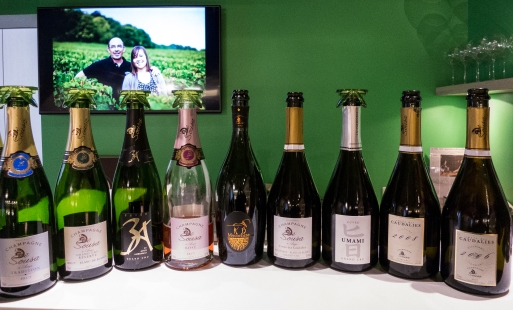 Nowadays, Michelle and Erich De Sousa look for a complete array of first class Champagnes. The ones I liked the most were Cuvée 3A, Cuvée Especial Caudalies and Cuvée des Caudalies 2008 and 2006. All of them share a great character. They are smooth, vibrant and with a long aftertaste.
Nowadays, Michelle and Erich De Sousa look for a complete array of first class Champagnes. The ones I liked the most were Cuvée 3A, Cuvée Especial Caudalies and Cuvée des Caudalies 2008 and 2006. All of them share a great character. They are smooth, vibrant and with a long aftertaste.

Next visit: Larmendier-Bernier at Vertus. They own 15 hectares between 1er Cru and Grand Cru. They take a lot of care of the “natural” yeast strains to provide a more personal character to their wines. My favorite ones: Rosé de Saignée 1er Cru Extra Brut and Longitude 1er Cru.
Next destination: Lilbert Fils at Cramant. 3.5 ha of 100% Chardonnay Grand Cru. We were very tired after visiting three wineries. It was getting dark and the air was cold. But I quite enjoyed this visit a lot. Small house, small winery, a quiet man. I liked quite a lot his wines, but above all I enjoyed the Lilbert Fils Cramant 1999, a great wine that talks for itself. One wonders why Champagne wines are sold so early (money talks) if they are so wonderful when they have been in the cellar for a few years. A plausible answer could be: buy them, keep them between 5 and 15 years and drink them after that.
3.5 ha of 100% Chardonnay Grand Cru. We were very tired after visiting three wineries. It was getting dark and the air was cold. But I quite enjoyed this visit a lot. Small house, small winery, a quiet man. I liked quite a lot his wines, but above all I enjoyed the Lilbert Fils Cramant 1999, a great wine that talks for itself. One wonders why Champagne wines are sold so early (money talks) if they are so wonderful when they have been in the cellar for a few years. A plausible answer could be: buy them, keep them between 5 and 15 years and drink them after that.

Next destination: Pierre Paillard at Bouzy. 11 ha of Grand Cru. Tradition and savoir faire to produce wonderful wines. I liked quite a lot of them, specially the Pierre Paillard Grand Cru 2011, Millésimé 2004 and the Blanc de Blancs 1996. We had the chance to sip two red wines as well: Bouzy Rouge 2012 (very well balanced, floral, smooth with a long aftertaste) and… a Bouzy Rouge dated… between 1905 and 1925! Just a terrific experience! The wine was very delicate, light and floral. Just… wonderful! We had to drink it quite fast, which was a pity, because this wine deserved more attention. In any case, I thanked the opportunity to taste it.
Last day of the trip: 8 a.m. Visit to Egly-Ouriet. Just a word: outstanding. What else?

We tasted three incredible wines: Egly-Ouriet Pinot Meunier, Egly-Ouriet VP and Egly-Ouriet Millésimé 2006. The state of the art. They have creamy foam, very slim and quiet. Nose: flavorsome and rich. Mouth: creamy, well balanced, complex, with a long aftertaste. In short: a path to be followed.
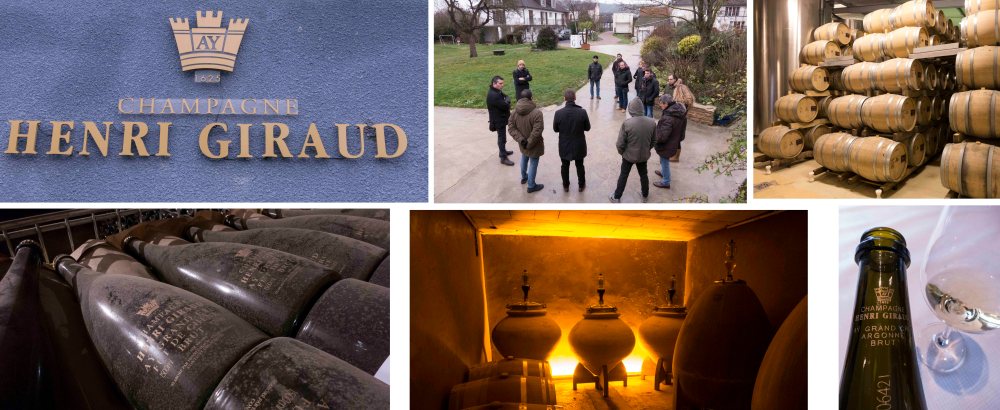
Our last visit was to Henri Giraud at Ay. They own the vines, the forests (to produce the casks) and the winery, so they really care about every step of the process. They produce very interesting and different champagnes. Ay has been well known for centuries for the high quality its soils render that provide vibrant and balsamic wines. I really enjoyed two of them: Argonne 2004 and MV 2009. Both of them are creamy, smooth, vibrant, balsamic and with a long aftertaste.
These three days were very intense. They gave me the chance to know one of the paths that the AOC Champagne is taking, i.e. to produce high quality and distinctive wines to cater very demanding costumers and, at the same time, to take care of the soil and its interactions to promote more balanced wines based on the respect to Nature.
